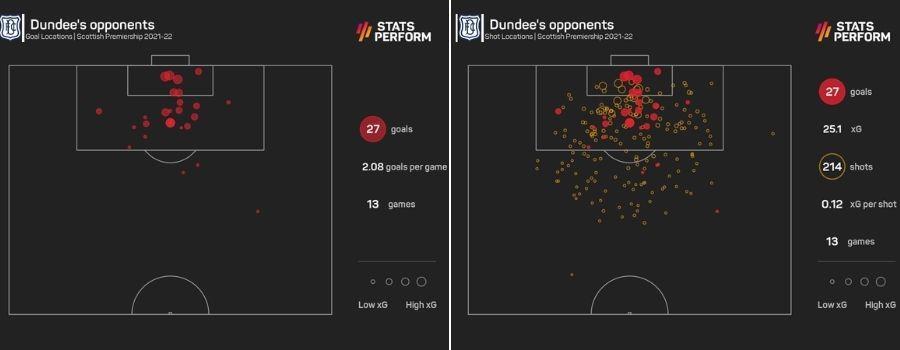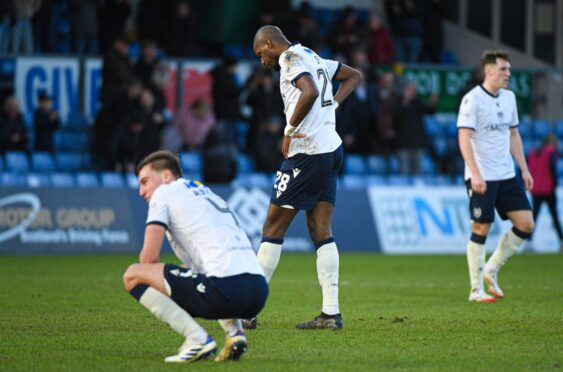A quick look at the league table tells you the simple stat that Dundee have the worst defence in the Premiership this season.
After 13 games in they have conceded 27 goals including nine flying past Adam Legzdins in the last two home matches.
For a team lying in the relegation play-off spot, it’s a stat James McPake and his men have to improve on.
If you look deeper into the numbers this season, though, what does it tell us?
Busy Lee
In their promotion season, Lee Ashcroft scooped up both the Fans’ Player and Players’ Player of the Year trophies after an impressive debut campaign.
Not just for his goal-scoring exploits but for his rugged defending in his own box.
That has continued this term.
In fact, Ashcroft is one of the leading defenders in the entire Premiership for his power in the air, blocking goal-bound shots and clearing danger.
He may be down the list in terms of percentage of aerial duels won (seventh on 69% behind leader Cameron Carter-Vickers of Celtic on 80%) but he has won more than any other defender.
He’s also top of the tree, alongside St Johnstone’s Joe Shaughnessy, for blocks with 18 and second, behind Dundee United’s Ryan Edwards, for clearances with 82 this term.
As a newly-promoted side, Dundee have had to do a lot of defending.
And Lee Ashcroft has been front and centre when the opposition come knocking.
Where the goals are coming from?
Cross balls are a problem.
That points to two things – full-backs not stopping the crosses at source and centre-backs failing to clear when the ball comes in.
Fifteen of the 27 conceded come from teams getting in down the flanks and crossing for strikers to score – 10 from Dundee’s left and five from the right.
That includes some big off-days with three from Dundee’s left conceded at St Johnstone, three from the right at Celtic and three from the left the other week at home to Ross County.
That’s a big problem to solve for McPake and his coaching staff.
How do Dee defenders compare?
As expected, there’s a big difference in successfully defending high balls between the centre-backs and full-backs.
However, the differences between the two full-backs Cammy Kerr and Jordan Marshall show where their strengths lie defensively.
Marshall is by far Dundee’s best man at gaining possession from loose balls or poor passes from the opposition with more than six a game compare to Kerr’s 4.2.
Kerr, though, wins more tackles and aerial challenges than his left-sided counterpart.
Between the centre-backs, Ryan Sweeney has been far better stopping the opposition on the ground than his partner Ashcroft with more than double the tackles and interceptions per game.
Ashcroft, though, as mentioned previously is very strong in the air.
Which formation works best?
Manager James McPake much prefers the 4-3-3 set-up that gets the best out of winger Paul McMullan.
Largely his defence has preferred the four-man backline as well – losing 5-0 at home to Ross County the exception, of course.
When moving to a back three or five, Dundee conceded four to Celtic, three to St Johnstone and six to Celtic.
Their best performance with that defensive setup came against Rangers in a 1-0 home defeat.
Dundee are yet to pick up a point playing with three central defenders with points won this term with a four-man backline.













